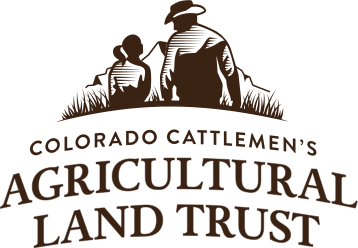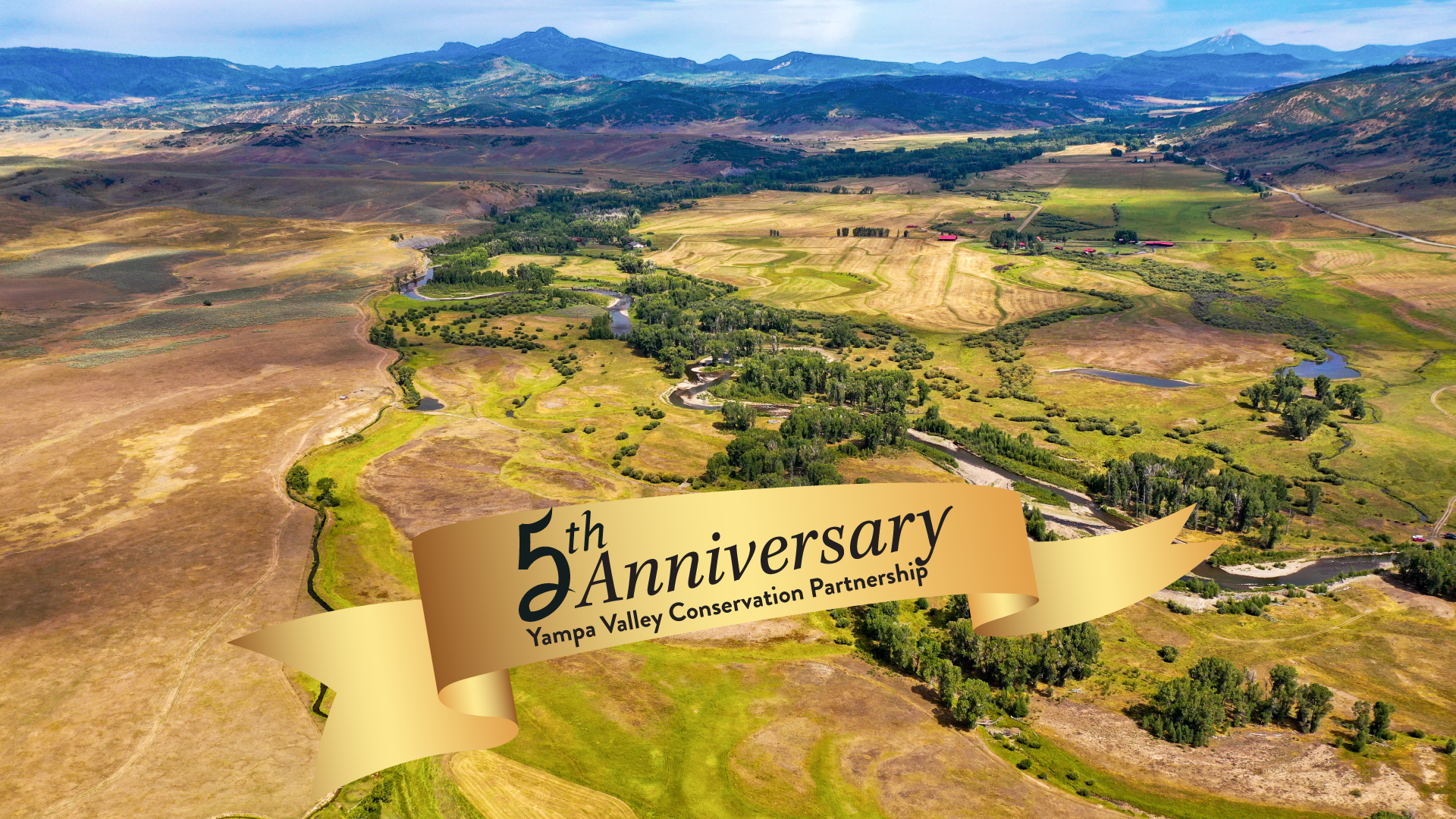The LAND Connects Us
June 30, 2024 | By: Karina Puikkonen | 7 min. read
The first of a four-part monthly series that highlights the 5th Anniversary of the Yampa Valley Conservation Partnership as a continuation and extension of conservation partnerships this region has built over the last 30 years.
Northwest Colorado’s lofty mountains, dense forests, sagebrush and grass valleys, and flowing creeks and rivers showcase Colorado’s high-country beauty. Like many rural areas in Colorado, it’s a region where farmers, ranchers, and other landowners have learned how to live with the land thanks to knowledge passed down for generations and through support from each other.
For more than a century, these lands have been the foundation for prosperity, progress, and growth in the region. Northwest Colorado exhibits a blend of farmers, ranchers, and private landowners that may manage the land differently from each other, but for over thirty years they have shared the same vision of keeping this region’s landscapes open and productive for agriculture and wildlife forever.
The Yampa Valley Conservation Partnership
The Colorado Cattlemen’s Agricultural Land Trust (CCALT) and Yampa Valley Land Trust (YVLT) were formed around the same time during the early 1990s. Landowners partnered with both organizations as conservation easements became better known as effective tools for generational land transfer. A network of landowner-led conservation partnerships developed with both land trusts and between landowners.
In 2019, CCALT and YVLT merged and created The Yampa Valley Conservation Partnership (YVCP). The YVCP works to expand working lands conservation opportunities across six counties that make up Northwest Colorado. To support this region’s landowners and better meet their needs, CCALT also opened a regional office in Steamboat Springs. For 30 years and counting, individual landowners and families in Northwest Colorado have been some of the earliest adopters of private lands conservation, and as such have produced remarkable conservation outcomes.
Two river valleys in the region stand out as examples of how individual connections to lands have collectively created larger conservation corridors.
The Upper Elk River Conservation Corridor
Routt County, especially around Steamboat Springs, experienced significant growth at the same time private lands conservation began gaining momentum in the 1980s and 1990s. Skiing and outdoor recreation attracted residents and tourists alike to the area. The area’s early interest in private lands conservation coincided with new worries about sprawl, a loss of rural community character, and habitat loss.
The Upper Elk River Conservation Corridor is concentrated around the town of Clark. Jay Fetcher’s father purchased a ranch in the Upper Elk River Valley in 1949 and his family learned how to ranch by doing it day-in and day-out. Over the course of a lifetime, they built a family legacy and a way of life on Fetcher Ranch they want to keep alive. So, it wasn’t a surprise when this family became one of the first ranchers in Northwest Colorado to put a conservation easement on a portion of their property.
“The motivation to do an easement came mainly from the passion to forever protect the land, but also the management of estate challenges,” Fetcher said. “Working with other neighboring ranches, this idea of using conservation easements to protect these productive lands spread.”


Fetcher became one of the Colorado Cattlemen’s Association members who originally designed CCALT specifically to serve agricultural producers and their working lands, and CCALT’s portfolio includes all of Fetcher Ranch’s conservation easements. A parcel of the Fetcher Ranch that is conserved borders land owned by Paul and Noreen Slivon.
For over 30 years, Paul and Noreen Slivon have owned and managed Slivon Ranch. Their family maintains aspen and conifer forests, creeks and wetlands, open shrublands, meadows, and grazing lands that are leased annually to the Fetchers. Discussions with Jay inspired the Slivons to conserve their ranch, and their property became YVLT’s first completed conservation easement in 1994.
“It’s such a special property and I didn’t want to see it subdivided,” Paul Slivon said. “It was and still is nice to have a place where there isn’t much development, or people pressure on the land.”

These beautiful landscapes still attract people who want to visit or reside there and since the Upper Elk River Valley lies within an hour of Steamboat Springs, development pressure remains high. Routt County that began as small ranching communities and towns in the late 1800s has grown to the current population of over 25,000 residents, with more than 500,000 annual visitors.
Conservation is widely supported by Routt County residents. The county’s Purchase of Development Rights (PDR) Program was created in 1996 and reauthorized by voters in 2005 and 2022. The program uses a mill levy to support permanent land conservation that maintains the rural foundation and charm the county is known for.
“It is important that neighbors worked together so that conservation support spreads across fence lines,” Fetcher said.
PDR’s additional support has allowed conservation easements to become the tool of choice for many landowners and families in the Upper Elk River Valley. They have collectively conserved over 17,000 acres of land along the Elk River and its tributaries, lands that will always be available for agriculture and wildlife.
North Park: A Wild Conservation Corridor
Jackson County, located in an area known as North Park, is one of the least populated counties in Colorado. According to the Colorado Department of Local Affairs, the population in 2022 was just 1,314 people. Only three counties in the state have fewer residents. Thanks to the area’s lack of people, beautiful vistas are visible from nearly every angle of North Park, a large valley bordered by mountains.
North Park includes public lands with multiple use areas and large tracts of private lands primarily used for agricultural purposes. The valley is a concentration area for large herds of elk, is considered Colorado’s “Moose Viewing Capital,” and is a major migratory pathway for waterfowl. Of the county’s human residents, several individuals and ranching families also began conserving their lands in the mid-1990s to protect this wild way of life.
Sharon Harvat grew up in Middle Park (in nearby Grand County), and she and her husband, John, always wanted to ranch. They found their first opportunity in North Park in the early 1990s, and after a few years of leasing, they purchased the Lucky Penny Ranch in partnership with two other landowners. They have since built a sustaining cattle operation with summer operations on the ranch and winter operations in Nebraska.
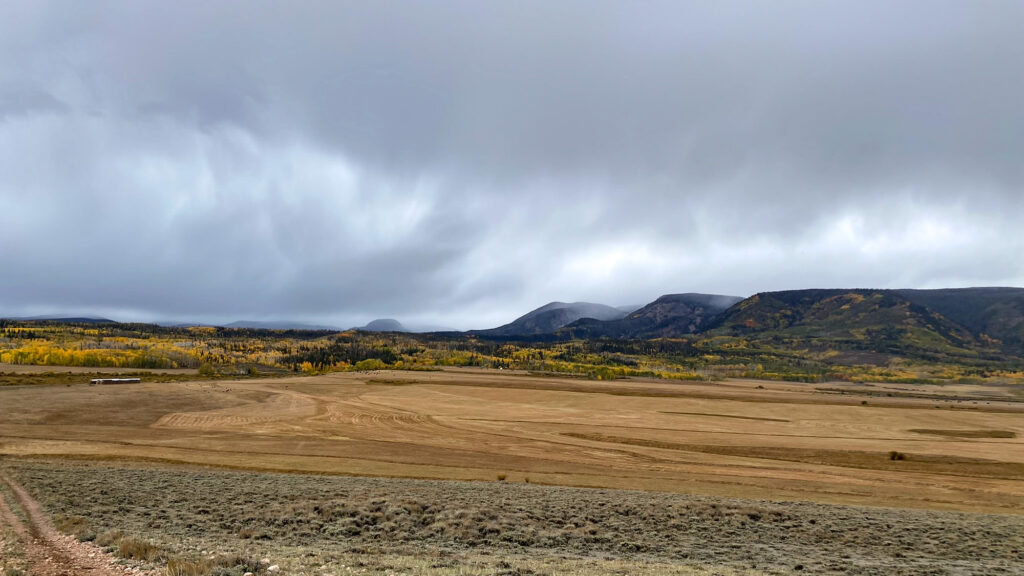
As one partner was bought out in 2000, the Harvats’ other partner, Bill Beck, was interested in putting a conservation easement on the ranch as he did not want North Park to experience the water loss that development brought to other areas. A conservation easement would tie their water rights to the land in perpetuity. The Harvats and Beck conserved Lucky Penny Ranch together in 2007.
“It is harsh country, especially in winter. The mountains above us have some of the highest amounts of precipitation in the state that fall in the form of snow,” Harvat said. “Because of this we don’t have the development that Steamboat Springs has and so there are still big expanses of beautiful ranchlands.”
Because North Park is so sparsely populated, Harvat said there is a real sense of community there, more so than you may see in other places. When people struggle, the agricultural community jumps in and helps where they can. This has included a very quiet and humble approach to conserving land.
Individual families and landowners have conserved more than 26,000 acres in North Park, helping to keep agricultural operations viable and lands open for large numbers of wildlife. Harvat said the impact of conservation is evident when residents celebrate the small marvels they experience daily.
“Everyone who goes to their mailbox says, ‘Did you see this and that animal today?’” Harvat said. “These little glimmers make you smile every day.”
Neighboring landowner, Sarah Loughran, felt the same way about her land in North Park that has no shortage of wildlife, and also provides rangeland that a local rancher leases to graze cattle every summer.
“It’s an absolutely beautiful place with a lot of wildlife and a tightly connected community,” Loughran said. “I’m thrilled to provide wildlife habitat, including elk birthing grounds and sandhill crane nesting sites.”
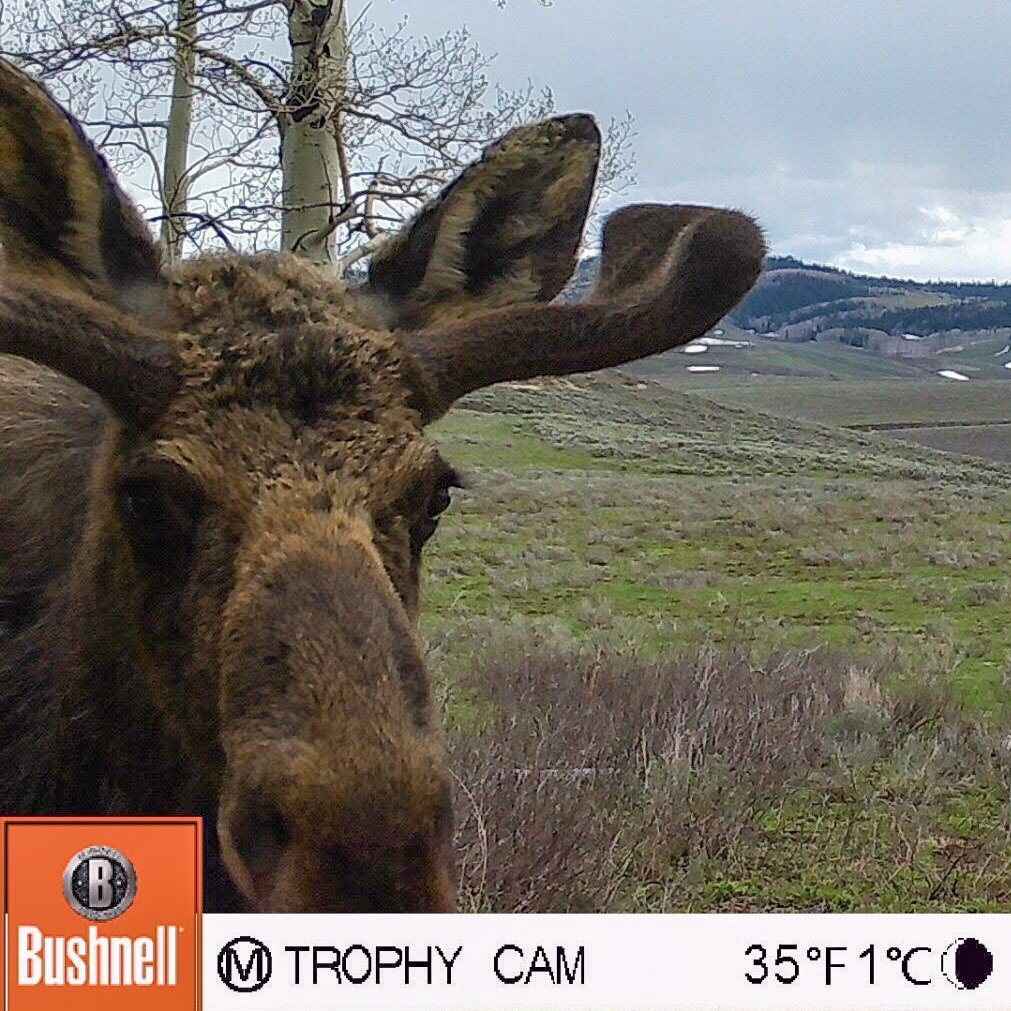
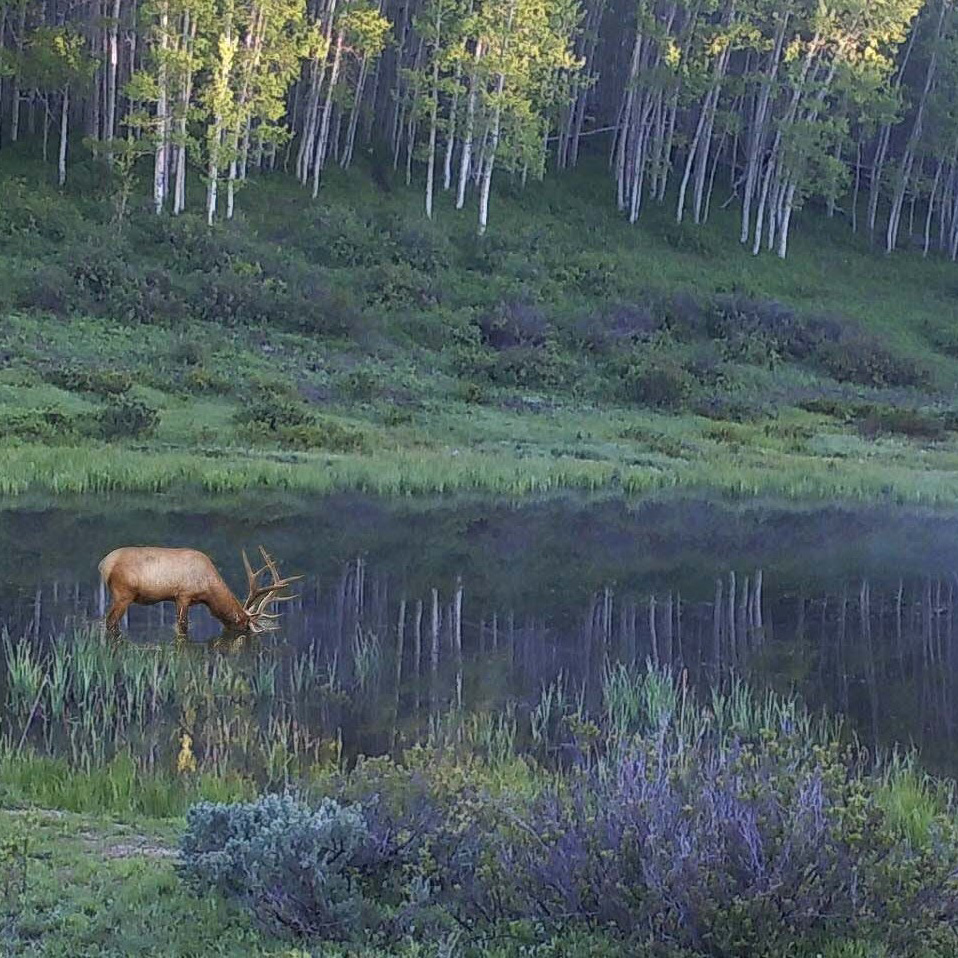
Originally from Eagle Valley, but living in California, Loughran wanted to get back to the Colorado mountains and “own some Colorado dirt.” In 2018, she set out to purchase enough strategically located land in North Park to provide some conservation value to the community.
When she moved to Northwest Colorado full-time in 2020, Loughran learned about the scope of conservation in North Park and Routt County and completed her conservation easement on the Wilset Creek Ranch with CCALT in 2021. As a landowner, she now serves on the YVCP’s Northwest Colorado Advisory Committee and is also a contract monitor for CCALT, visiting her peers on other conserved properties in Routt and Jackson Counties each year.
“I really admire what CCALT has done here with respect to the YVLT,” Loughran said. “Taking that merger as a foundation to continue conserving lands in the original three counties and now six counties. CCALT is really integrated as part of the community, and having staff in Steamboat Springs has been meaningful for easements and the stewardship of those easements in these counties.”
In the Yampa Valley Conservation Partnership, CCALT and landowners work and consult with each other to support conservation values that are important in the Northwest Colorado region, including agriculture, wildlife, and responsible recreation. Conservation easements are an individual and family decision, but collectively they benefit everyone who lives in or visits the region. This is something these large conservation corridors in the Upper Elk River Valley and North Park exemplify.
